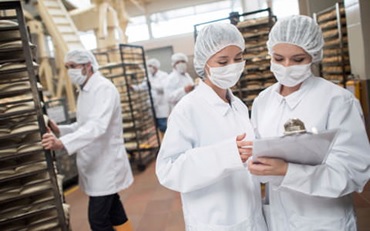HACCP and HARPC: Which Regulates Your Food Manufacturing Plant?
Veröffentlicht November 09, 2016 von Advanced Energy Editor

What is HACCP and HARPC?
Facility managers are hard pressed to make sure that their food processing production meets the requirements of multiple regulations. Not knowing which regulations apply to your facility is one of the most common mistakes you can make. Two major and often confused regulations are the HACCP and the HARPC.
The Hazard Analysis and Critical Control Point (HACCP), regulated by the FDA “is a management system in which food safety is addressed through the analysis and control of biological, chemical, and physical hazards from raw material production, procurement and handling, to manufacturing, distribution and consumption of the finished product”. The Hazard Analysis and Risk-based Preventative Controls (HARPC), a provision in the Food Safety Modernization Act (FSMA) is used to “identify hazards that might arise due to the specific foods or food ingredients in the food or due to the various processing, manufacturing, packing, and holding steps applied to the foods”. Once identified, a plan must be created to minimize and reduce the risk.
Is your Food Processing Facility Regulated By HACCP, HARPC or Both?
At this point you’re probably wondering which regulations apply to your facility, and in order to determine which ones do, you need to ask yourself these questions:
- Are you regulated as a food processing facility?
- Are you regulated as a food supply facility?
The Results?
Who is Regulated by HACCP?
A supplier, such as a chicken supplier is regulated by the USDA and FDA. Therefore they will need to abide by the HACCP regulations.
Who is Regulated by HARPC?
A food processing facility that makes a food product such as chicken noodle soup will have more strenuous requirements to meet the provisions of the FSMA.
Who is Dual Regulated?
A supplier facility who provides the chicken product for the food processing facility making the chicken noodle soup will be dual regulated by the HARPC and HACCP.
HACCP, a global industry standard adopted as a regulation by both the USDA and FDA, addresses the hazard of a food production facility. HARPC, a legislative mandate that implements a new approach to food safety, addresses the risk of the food processing facility. The two of them require two different written food safety plans based on the distinction of the outcome.
The Toxicology Education Foundation states that “a hazard is anything that can cause harm, whereas risk is the potential for a hazard to cause harm. You can also think of it this way: A hazard will not pose any risk to you unless you are exposed to enough of that hazard to cause harm. Risks associated with hazards can be eliminated, or at least greatly reduced, by reducing exposure”.
RISK = HAZARD x EXPOSURE
The relationship between risk and hazard can best be defined as “risk is equal to hazard times exposure.” For food processors, this suggests that the hazard is the potential of pathogens growing in the food product. The exposure is how often throughout the process the food product is subject to contamination. The risk is the probability that the consumer would become ill from consumption of the food product. Food processors who maintain accurate temperatures during the food production process are more likely to reduce or eliminate the hazard and therefore potential risk to both consumers and the business.
For more information, please contact us.
